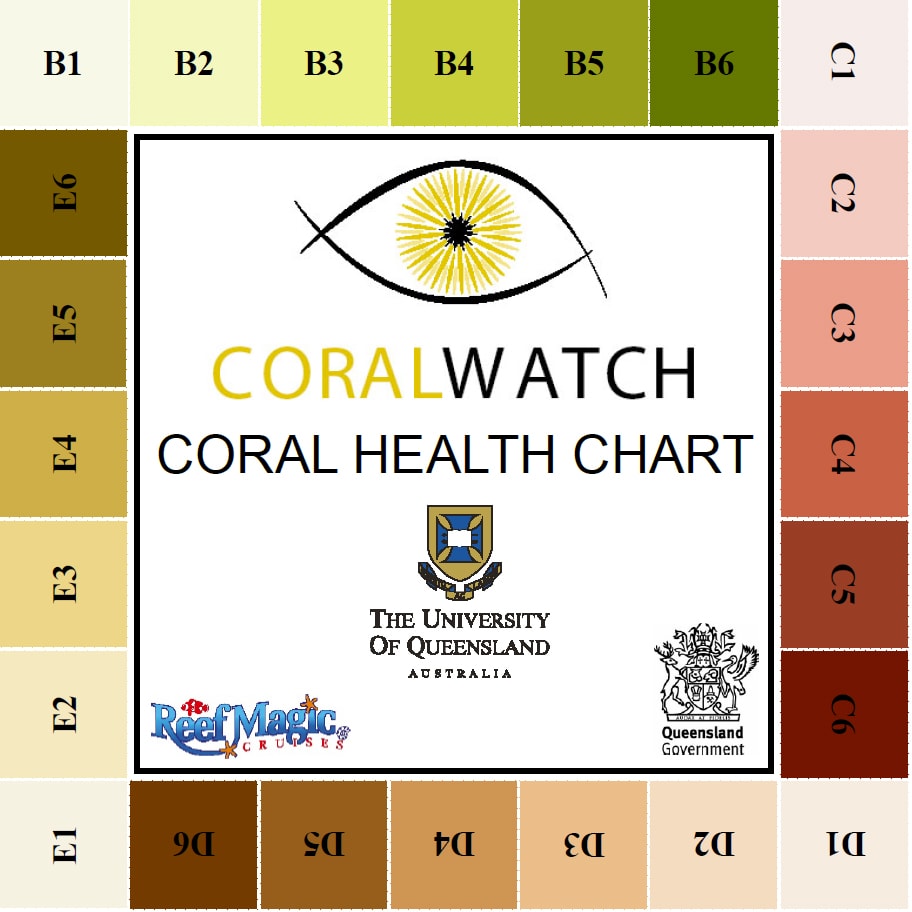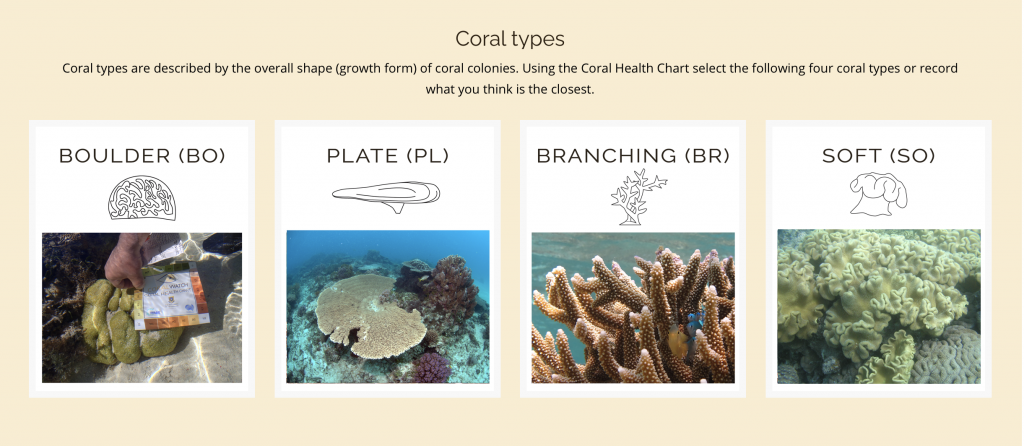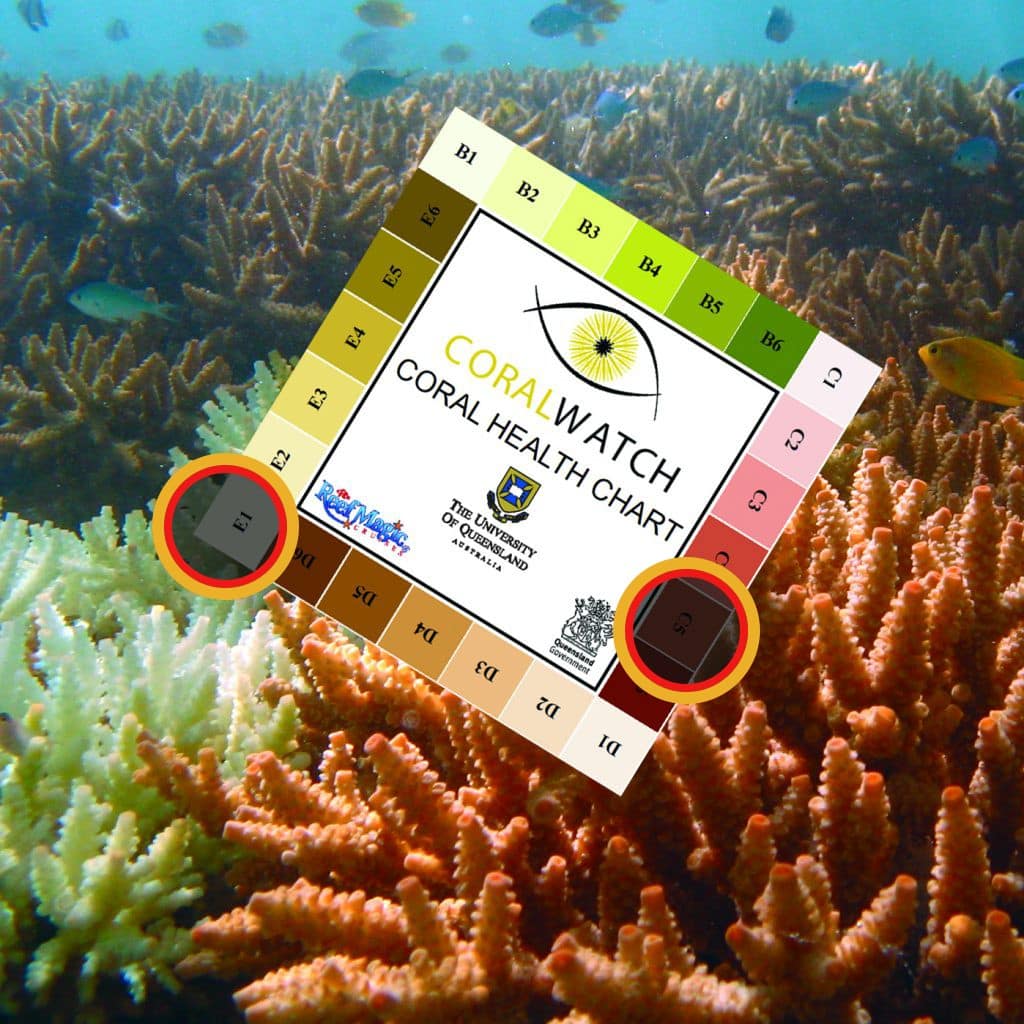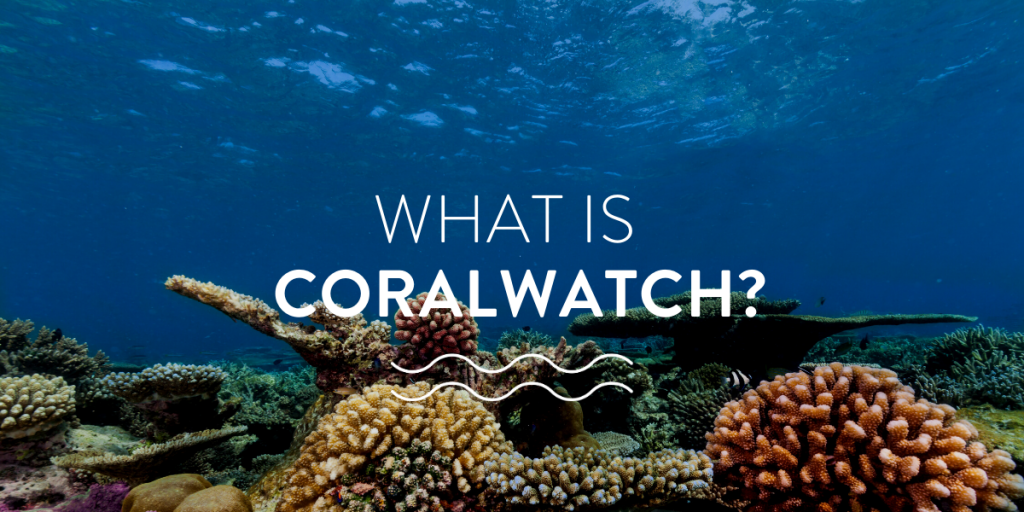Love coral reefs and the ocean? Want to get involved in protecting them? Interested in citizen science and coral health? Then read on to learn about CoralWatch and how easy it is for you to help out…
First, a little bit of background.
Coral bleaching is the process where corals loose the symbiotic algae (zooxanthellae) housed within them. These zooxanthellae give the coral its colour and are their main energy source. When stressed by changes in the environment (e.g. sustained temperature increases), corals unfortunately react by expelling these zooxanthellae. Corals can recover from this if what triggered the change ends quickly, but if corals are exposed to long term stress then disease and death are much more likely.
5 coral bleaching events have happened in the past 20 years, with the latest occurring in March this year! Mass bleaching has become one of the most visible impacts of rising ocean temperatures and climate change. Hopefully we can find ways to mitigate the effects of these events and use the CoralWatch data as a tool to fight for climate action.
What is CoralWatch?
CoralWatch is a not-for-profit citizen science program working with volunteers all over the world to increase understanding of coral reefs, coral bleaching and climate change. There are just not enough scientists to monition the health of all the coral reefs, so volunteers (potentially you!) are vital for collecting data.
Back in 2002 CoralWatch developed the coral health chart to make it easy for anyone to collect information on the health of corals in a standardised way. This information can then be added to the CoralWatch global database.
How does it work?
Getting started:
Simply download the Do-It-Yourself instructions and request a Coral Health Chart, then you’re good to go.

Conducting a survey:
- Choose a random coral and select the lightest area.
- Rotate the chart to find the closest colour match.
- Record the colour code on a data slate.
- Select the darkest area of the coral and record the matching colour code.
- Record the coral type.
- Continue your survey with other corals. Record at least 20 corals.
- Submit your data using the CoralWatch Data Entry Apps or enter on the site.
There is more information on survey methods here

Tips:
- Only choose corals with colours that approximately match the chart. Avoid blue and purple corals, as they have different bleaching responses.
- Use a touch if deeper than 5m /15ft, due to the colour loss at depth
- Don’t measure growing tips of branching and plate corals as they are naturally white.

What happens with the coral data?
All the data collected is available publicly online. It can be used for scientific analysis as well as an educational tool. The data has been referenced in many scientific papers and research studies.
So far people from 79 different countries around the world have collected and input data as part of CoralWatch. The data is being used to answer questions like:
- Do all reefs bleach during an event?
- Are there some reefs or zones of reef that never bleach?
- Do the same areas bleach every time?
- Are some more resilient than others?
- How long after the water drops back down in temperature does it take for a coral or reef to recover?
Some pretty big and important questions I’m sure you’ll agree!
Read: 12 Ways YOU Can Help Coral Reefs for more inspiration on what you can do to help coral reefs.
Now, get yourself over to the CoralWatch site to request your tools. Then depending on where you are and what local governments will allow, get surveying or get planning those future dives! Have fun!


